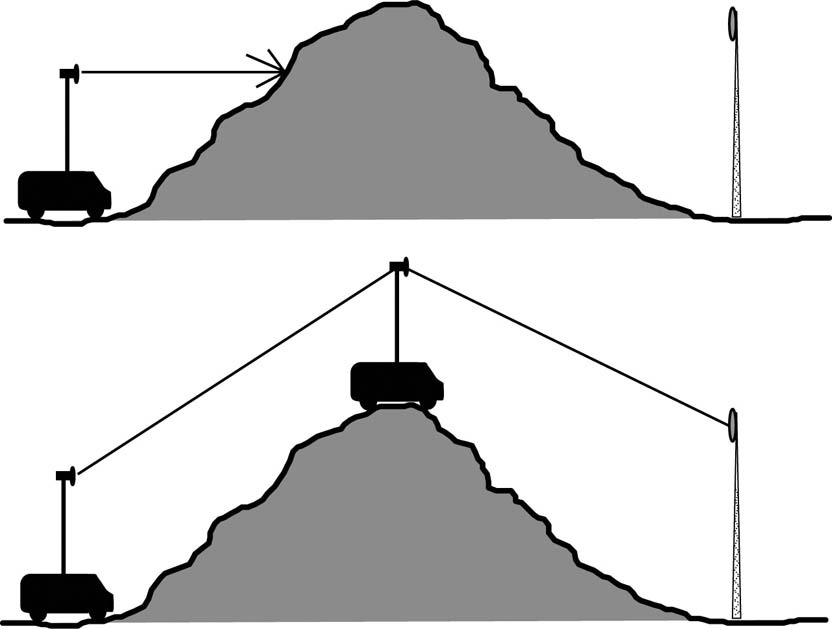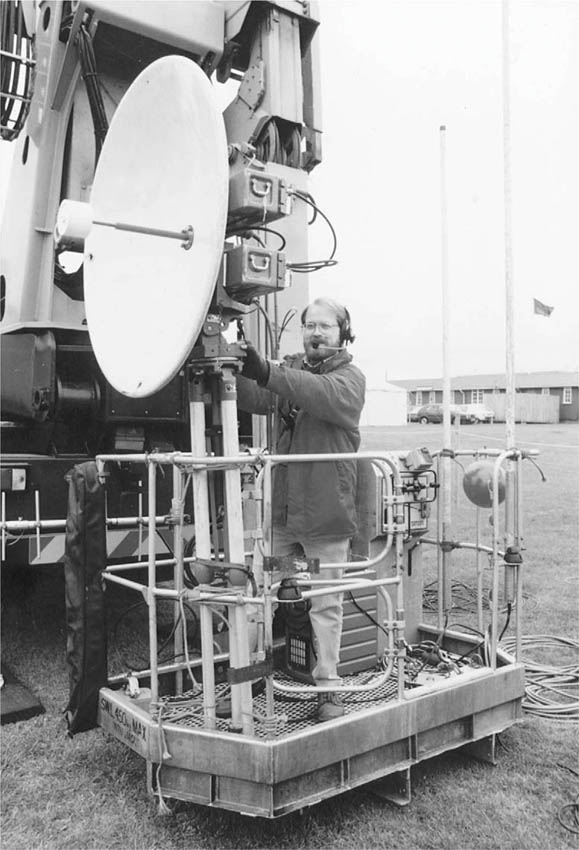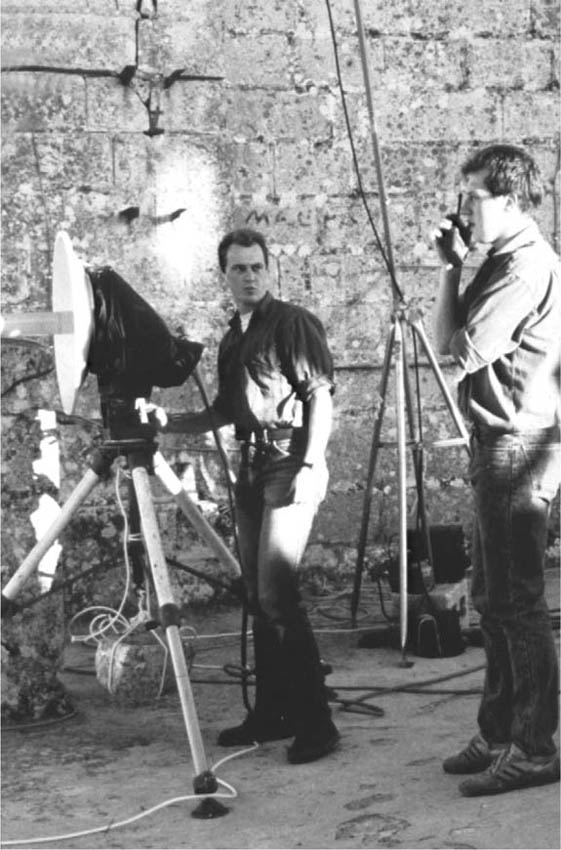Mid-points
Although less used nowadays in the age of SNG, we should just mention the option of mid-points, as these are used by stations who still use terrestrial microwave for long-haul links and have not yet been able to afford to enter the expensive world of SNG.
Microwave links over very long distances can be achieved by using a succession of point-to-point links – a chain of microwave repeaters termed ‘mid-points’ – that receive and then retransmit the signal on to the next point in the chain.
Mid-point

The mid-point is typically either a truck fitted with both a receiver and a transmitter with suitable antennas parked on a hill, a receiver/transmitter link on top of a mobile hydraulic hoist platform (cherrypicker); or a portable microwave receiver/transmitter link mounted on a tripod on a city centre rooftop.
Rigging microwave link on a ‘cherrypicker’ (60 m extension)

A microwave link can be mounted on a tripod for a temporary transmission, though it often needs to be secured to prevent it being blown away in bad weather. A tripod mounted link can also be used on the roof of a four-wheel drive car if it has a strengthened roof platform.
Tripod mounted link

The setting up of a set of mid-points is relatively straightforward, and it is common to try to use alternating frequencies and/or polarizations to minimize any risk of reflections finding their way back into the previous link hop. Before the advent of SNG, this was a common way of creating a long-haul connection back to the station, but it suffers from the disadvantages of demanding a lot of resources in terms of time, equipment and manpower. However, it does provide a means of covering that all important story that is 100 km away over two ranges of hills using terrestrial microwave.
Roofs
When a microwave links truck even with a mast cannot get a signal out of a city centre, a microwave link can be set up on a roof, either on a tripod or mounted on a pole. This link might be referred to as a ‘starter’ link. The link is rigged on a roof – or a suitable balcony – and the ‘live’ camera is cabled to it. The link equipment can hopefully be transported up within the building – via a lift or stairs – but it sometimes requires lifting equipment by rope from the outside of a building.
The setting up of a link for a roof starter link is just the same as for a mid-point – except obviously there is no receiver to be set up. The rigging of links on the roofs of buildings and other high points can be fraught with difficulties (such as finding cable routes, access and the risks of bad weather), and the issue of safety in these conditions is of paramount importance – we will look at this later.
